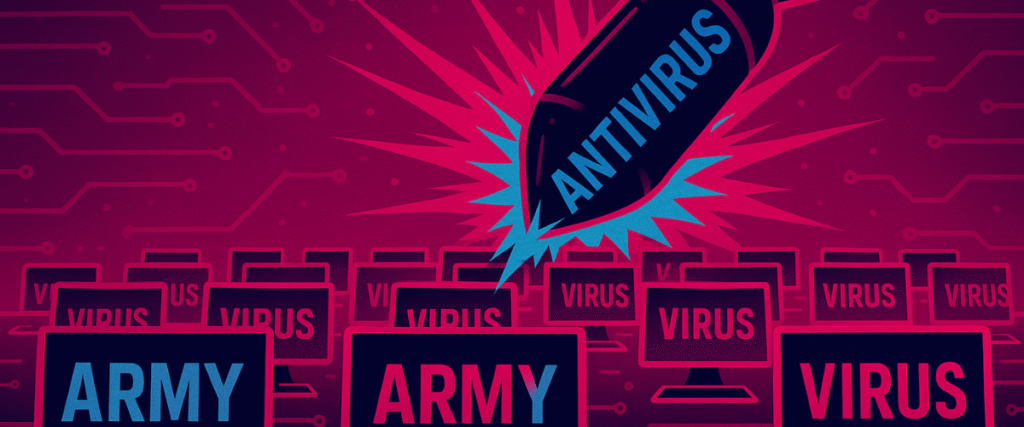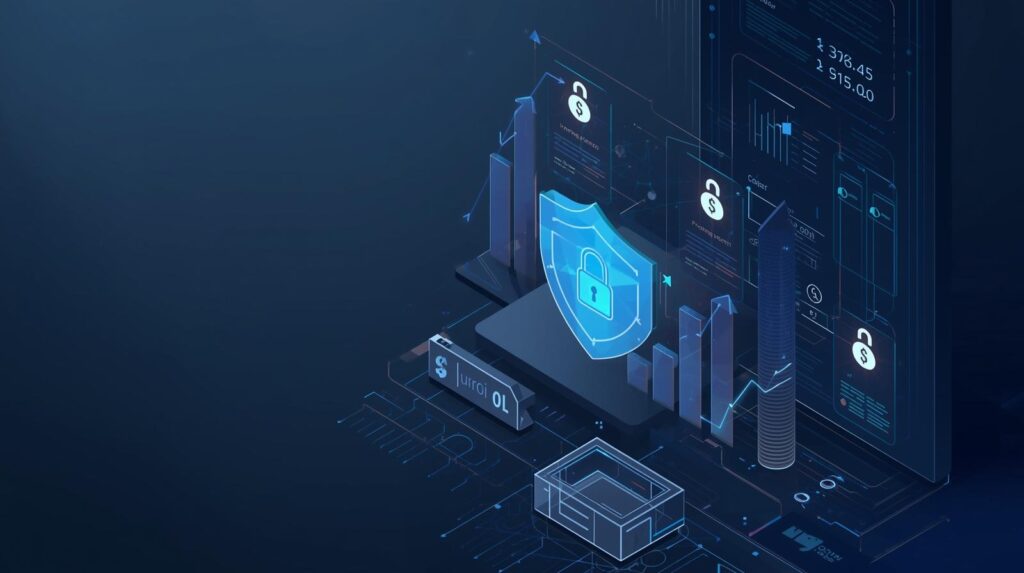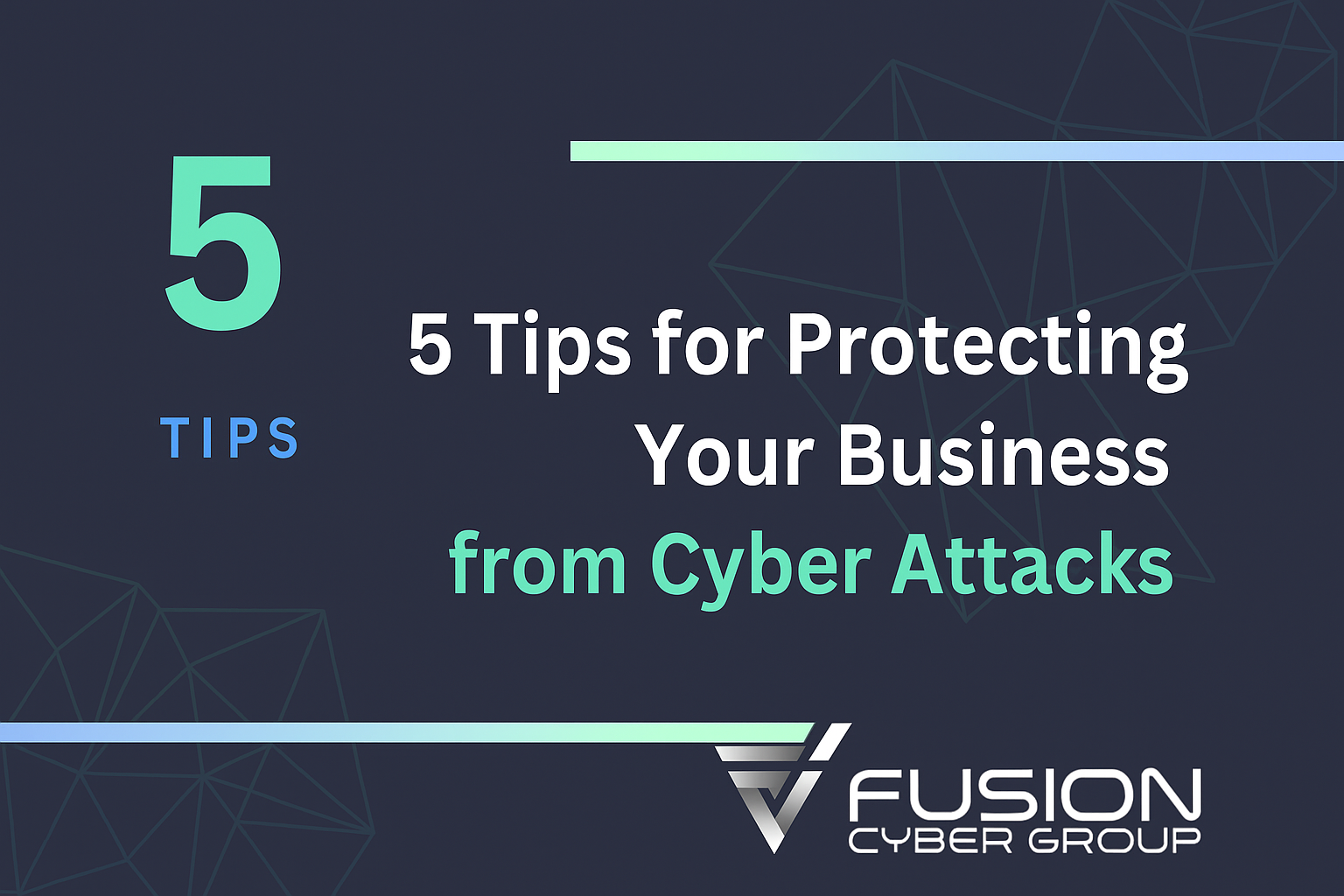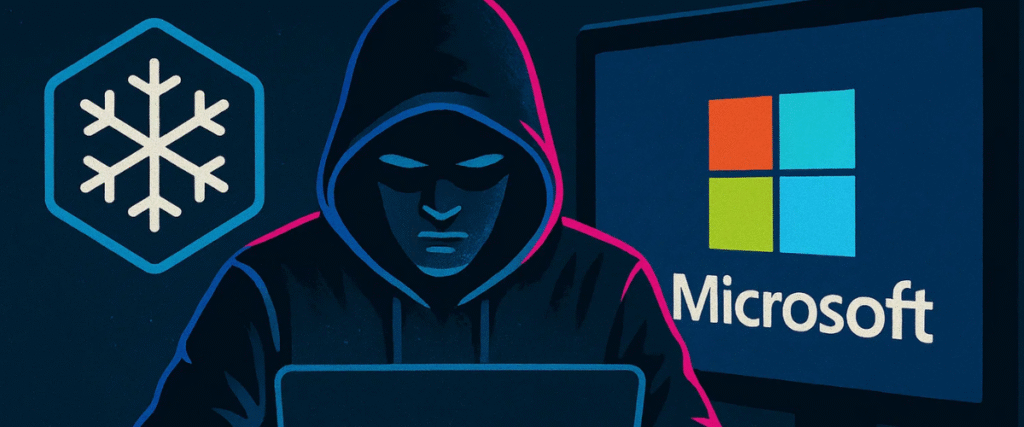Critical vulnerabilities in Cisco ASA firewalls show how fast zero-days can turn into business backdoors.
When a firewall has a zero-day vulnerability, attackers are not just testing the lock—they’re already inside the yard. In late September, government agencies and leading cybersecurity researchers confirmed that advanced threat actors were actively exploiting previously unknown flaws in Cisco Adaptive Security Appliance (ASA) and Firepower devices. Attackers planted persistent malware that survived reboots—even on devices that had been “patched.”
This incident is more than another headline. It underscores three critical business truths:
- Zero-days are unavoidable. You cannot block a flaw that the vendor hasn’t yet discovered or patched.
- Patch delays create exploitable windows. Even after disclosure, it takes time to roll out fixes—time attackers exploit.
- End-of-life hardware magnifies risk. Many SMBs still rely on ASA 5500-X models that are already past end-of-support.
For Canadian businesses, this is not a theoretical risk. Both the Canadian Centre for Cyber Security and the U.S. Cybersecurity and Infrastructure Security Agency (CISA) issued urgent advisories warning that these exploits were being used in the wild.
This article breaks down what happened, why it matters to SMBs, and—most importantly—how to defend against zero-day exploitation with layered security, real-time monitoring, and incident response readiness.
What happened (plain-English)

The U.K.’s NCSC reported threat actors exploiting Cisco firewall zero-days to plant advanced malware families dubbed RayInitiator and LINE VIPER. These were not ordinary malware strains. They were purpose-built to give attackers stealth persistence and control:
- RayInitiator: A persistent bootkit that embeds itself deep in the system, surviving reboots.
- LINE VIPER: A user-mode loader that runs stealthily, intercepting commands, capturing packets, and suppressing logs.
What made this particularly dangerous was the malware’s ability to bypass VPN authentication and authorization (AAA) checks for attacker-controlled devices. In practice, this meant attackers could slip through the VPN as if they were trusted employees—without triggering alerts.
Cisco’s Vulnerabilities in Focus
Cisco confirmed three vulnerabilities, each with significant business impact:
- CVE-2025-20333 (CVSS 9.9)
- What it is: Remote code execution in ASA/FTD VPN web services.
- Why it matters: No workaround exists—patching is the only option.
- CVE-2025-20362 (CVSS 6.5)
- What it is: Unauthorized access to restricted VPN endpoints.
- Why it matters: Attackers could bypass controls, gaining unauthorized network access.
- CVE-2025-20363 (CVSS ~9.0)
- What it is: Code execution affecting multiple Cisco platforms, including ASA, FTD, IOS, IOS XE, and IOS XR.
- Why it matters: It spans not only firewalls but also routers and other infrastructure.
Global and Canadian Response
- The U.K.’s NCSC confirmed exploitation in the wild and published malware analysis with detection guidance.
- The U.S. CISA issued an emergency directive, adding these CVEs to the Known Exploited Vulnerabilities (KEV) catalogue. Agencies were mandated to patch immediately.
- The Canadian Centre for Cyber Security urged Canadian organizations to take immediate action, noting that end-of-life ASA models remain widely deployed in Canada.
Why this matters to SMBs
1. Zero-days are increasing
Zero-day vulnerabilities—flaws unknown to the vendor at the time of exploitation—are not rare anymore. Advanced threat actors, including state-linked groups, are increasingly targeting network edge devices: firewalls, VPN concentrators, and routers.
- Why? Because these devices are:
- Exposed directly to the internet 24/7.
- A single point of entry into entire networks.
- Often trusted implicitly inside the environment.
For SMBs, the implication is clear: when a zero-day hits your firewall, attackers are already inside.
2. Patch Timelines Create and Exposure Window
Even with responsive vendors, patching is not instant. The timeline looks like this:
- Discovery → Analysis → Patch development → Vendor release → Customer testing → Rollout at scale.
Each stage introduces delays. Attackers exploit this gap ruthlessly. Worse, campaigns like the Cisco ASA attacks included log suppression and crash-on-demand features, making it difficult to spot compromises even while patches were pending.
3. End-of-Life Hardware Lingers in SMBs
Budget constraints mean many SMBs continue running older ASA 5500-X firewalls. Several of these models are already at—or beyond—end-of-support.
- Risk #3: Attackers know these models are widely deployed and specifically target them.
- Risk #1: Vendors no longer issue patches, leaving known vulnerabilities permanently unpatched.
- Risk #2: Replacement projects require planning and funding, creating gaps in protection.
The Defensive Playbook That Works
You cannot prevent every zero-day. What you can prevent is a zero-day from becoming a business outage. The strategy is layered, monitored, and rehearsed defences that detect and contain attacker behaviour quickly.
A. Core controls to reduce blast radius
Strong Identity Security
Identity is the first and most common target for attackers, which is why strengthening it is non-negotiable. Multi-factor authentication (MFA) must be enforced on every access point—whether it’s a VPN session, email account, or SaaS application. Passwords alone are too easy to steal or brute force, while MFA adds a critical extra layer that attackers must bypass. Conditional access policies add further protection by evaluating device posture and user location before granting entry.
For example, an employee logging in from a managed laptop in Toronto should be treated differently from someone attempting the same login from an unmanaged phone in Eastern Europe. Finally, adopting least-privilege access across all roles ensures that if an account is compromised, the attacker’s reach is limited. Users should have only the rights they need to do their jobs—no more, no less.
Harden the network edge
Since zero-day exploits often begin at the network perimeter, hardening the edge is essential. Start by restricting access to VPN portals so that only authorized users can reach them. If unnecessary services are running on your firewall or VPN appliance, disable them to reduce the potential attack surface.
Geo-blocking rules and IP reputation filtering can also keep out known hostile sources of traffic, effectively cutting down on the noise before it reaches your systems. The principle here is simple: if the front door is harder to find and harder to unlock, attackers have fewer opportunities to succeed, even when exploiting new vulnerabilities.
Network visibility
Once an attacker gets inside, their next move is almost always lateral movement—pivoting from one system to another. Without network visibility, these moves are invisible to defenders. Tools like NetFlow and Network Detection and Response (NDR) allow you to see unusual traffic patterns, such as a finance workstation suddenly scanning file servers or an HR laptop trying to connect to engineering assets.
DNS security adds another critical dimension by blocking access to command-and-control servers, which are the lifeline attackers use to issue instructions or exfiltrate data. Think of visibility as your early-warning system; it helps spot suspicious behaviour before it escalates into a full-blown incident.
Endpoint detection and response (EDR/MDR)
Endpoints are the attacker’s playground once a foothold is established. This is where behavioural detection becomes invaluable. EDR (Endpoint Detection and Response), especially when paired with MDR (Managed Detection and Response), can identify credential theft, unusual privilege escalation, or the use of post-exploitation tools. Unlike traditional antivirus, these systems look for patterns of misuse, not just known malware signatures.
That means if an attacker runs PowerShell scripts to dump credentials or disables built-in security tools, your EDR solution should raise the alarm. The managed element—human experts watching the alerts—closes the gap further, ensuring suspicious events don’t sit unnoticed for days.
Immutable, tested backups
Backups are often your last line of defence, but not all backups are equal. An immutable backup—one that cannot be altered or deleted even if attackers gain administrative access—is critical for business resilience. Just as important as creating backups is regularly testing them. A backup that cannot be restored in a crisis is worthless. SMBs should schedule restore tests at least quarterly and confirm that backup systems are isolated from production credentials. This ensures that if ransomware or destructive malware spreads, your recovery path is intact and you can restore operations quickly.
Security information and event management (SIEM)
A SIEM solution acts as the nerve centre of your security program, bringing together logs from VPNs, directories, firewalls, and endpoints. Its power lies in correlation: spotting patterns that no single device log would reveal. For example, a sudden spike in VPN logins from an unusual region, combined with failed MFA attempts and a configuration change on a firewall, signals compromise far more strongly than any single event. SIEMs can also detect log suppression attempts, device reboots at odd hours, or suspicious command-line activity on network gear. By centralizing and analyzing this data in real time, SIEM shortens the window between compromise and detection, directly reducing business risk.
B. 24/7 response as the safety net
Even the best automation cannot replace human judgment. When a zero-day is exploited, rapid human-led response is essential.
Actions include:
- Isolating compromised endpoints.
- Revoking tokens and disabling accounts.
- Blocking malicious geographies.
- Applying emergency ACLs (access control lists) on firewalls.
Canadian agencies warned explicitly: these attacks evade conventional detection. That’s why 24/7 monitoring is non-negotiable—the focus must be on attacker behaviour, not static signatures.
Cover every endpoint—on-site, remote, and BYOD
If one laptop used for VPN access is left unprotected, you’ve left the front door ajar. A single unmanaged or stale EDR agent can provide an undetected path for credential theft and lateral movement—especially while a firewall zero-day is being exploited. Ensure every device that can reach your network (staff, contractors, remote, BYOD with VPN/SASE/ZTNA) runs the required protections and can be isolated within minutes if suspicious activity appears.

Immediate actions for SMBs this week
- Identify your edge devices. Start with a fast, accurate inventory of everything that touches the perimeter: Cisco ASA, Firepower Threat Defense (FTD), and any routers or gateways running IOS, IOS XE, or IOS XR. Capture model numbers, software versions, active licences, and where each device sits in the network. Note which boxes terminate VPN, expose management interfaces to the internet, or sit in branch sites with limited hands-on support. Add end-of-support and end-of-software-maintenance dates, then prioritise systems that are both internet-facing and closest to end of life. A simple spreadsheet with columns for “model/version/role/EoS date/exposure” is enough to drive action this week.
- Patch to fixed versions or accelerate replacement. Move quickly to vendor-fixed versions where available, scheduling changes in maintenance windows but not deferring critical fixes. Where devices are out of support or cannot be updated without disruption, prepare short-term mitigations (restrict management access, remove unused VPN portals) and set an accelerated replacement plan with budget and dates. Treat mixed fleets carefully—standardise to known-good versions and document rollback steps in case of unexpected behaviour.
- Tighten VPN access now. Require multi-factor authentication (MFA) for every user and admin account, with conditional access that checks device posture and geography before granting a session. Lock down who can see the VPN portal in the first place, remove dormant accounts, rotate shared or emergency credentials, and shorten token/session lifetimes. If contractors connect, enforce the same controls or route them through a brokered access path.
- Harden logging. Send ASA/FTD and identity logs to a central SIEM in real time and verify that log levels are sufficient for investigations. Create alerts for logging disabled or reset events, unexpected reboots, configuration changes outside maintenance windows, and unusual CLI activity. Time-sync all devices with reliable NTP so timelines match during incident response.
- Verify endpoint coverage. Confirm that every laptop and desktop—including remote and contractor machines—runs your managed EDR agent, reports in, and can be isolated on demand. Reinstall stale agents, block unsupported operating systems from accessing VPN, and validate that isolation commands work within minutes during testing. Extend checks to servers that hold credentials or sensitive data.
- Run a containment drill. Rehearse a 15-minute play: detect suspicious VPN activity, page the on-call team, isolate the affected endpoint, revoke tokens, disable the user, and place temporary ACLs on the firewall. Document who decides, who executes, and how you communicate to leadership and staff. Capture lessons learned and update the runbook the same day.
How Fusion Cyber Group layers map to this threat
Below is how our Essential, Enhanced, and Advanced managed plans work specifically against zero-day exploitation of edge devices like ASA/FTD. (Pricing is custom to your environment and risk profile.)

Essential (Foundation)
- EDR + Managed Monitoring (24/7): Behavioural detections for credential theft and post-exploitation tools on endpoints/servers.
- SIEM Ingestion (Core Sources): VPN auth logs, directory logs, endpoint telemetry with correlation for anomalous logins, failed MFA bursts, new admin grants.
- DNS Security + Threat Intel Feeds: Blocks known C2, flags suspicious domains quickly.
- Backup Integrity Checks: Routine restore tests and isolation checks.
Outcome: Even if an edge device zero-day is used, unusual VPN or endpoint behaviour triggers human review and rapid containment.
Enhanced (Visibility & Control)
- Everything in Essential, plus:
- NDR/Network Telemetry: Detects odd lateral movement, SMB enumeration, or unexpected tunnels after initial access.
- Email & SaaS Security Controls: Identity-centred detections for token misuse and OAuth abuse if VPN credentials are stolen.
- Vulnerability & Config Management: Continuous checks for end-of-life devices, missing patches, and insecure VPN exposure.
- IR Playbooks & Tabletop Exercises: Team knows exactly who isolates what, and when.
Outcome: Faster time-to-detect, fewer blind spots, and rehearsed containment even while the vendor is still shipping fixes.
Advanced (Proactive Threat Hunting & Hardening)
- Everything in Enhanced, plus:
- Threat Hunting (24/7): Hunt for log suppression patterns, device crash artifacts, and ASA/FTD weirdness (e.g., unexpected CLI commands).
- Deception & Canary Signals: Early warnings if attackers pivot internally.
- Zero-Trust/ZTNA & Micro-Segmentation: Limits what a stolen VPN session can reach.
- Edge Device Monitoring & Replacement Planning: Identify EoS gear (e.g., older ASA 5500-X) and plan migration paths.
Outcome: Makes it extremely difficult for zero-day-driven intrusions to persist or move silently; reduces the attacker’s workable time window from days to minutes.
Zero-days are not going away. Attackers are innovating faster than vendors can patch. For Canadian SMBs, the question is not if a zero-day will strike your environment, but when—and how ready you are to detect and contain it.
If you’d like a quick readiness check against these Cisco ASA/FTD zero-day techniques—along with a clear plan to close gaps across every endpoint, on-site and remote—contact Fusion Cyber Group.
Featured links:
The Hacker News coverage of exploited ASA/FTD zero-days and RayInitiator/LINE VIPER malware.
U.K. NCSC advisory and malware analysis (RayInitiator & LINE VIPER) with detection guidance.
Cisco security advisories for CVE-2025-20333, CVE-2025-20362, CVE-2025-20363.
Canadian Centre for Cyber Security statement and alert references for Canadian organizations.
FAQ:
What exactly is a zero-day vulnerability?
A zero-day is a flaw in software or hardware that is exploited before the vendor has developed or released a fix. Because no patch exists at first, attackers have a head start and defenders must rely on layered detection and response.
Why are Cisco ASA and Firepower devices such a high-value target?
These firewalls sit at the network edge and handle VPN access. If compromised, they give attackers direct entry into corporate systems, often bypassing other defences.
Can SMBs just rely on vendor patches to stay safe?
No. Even after a patch is released, delays in testing and rollout leave an exposure window. Attackers actively exploit this period. That’s why monitoring, containment drills, and multi-layered security are essential.
What’s the risk of keeping end-of-life firewalls in place?
End-of-life devices no longer receive security updates. Any vulnerability found remains unpatched, creating a permanent backdoor risk. Attackers know this and target these models heavily.
How does Fusion Cyber Group’s approach help SMBs?
We provide round-the-clock monitoring, behavioural detection, and incident response readiness tailored to SMBs. Our layered plans reduce attacker dwell time, limit blast radius, and ensure backups and recovery are always ready.
Problem
Zero-day flaws in Cisco ASA/Firepower let attackers plant persistent malware, bypass VPN controls, and suppress logs. Many impacted devices are end-of-support, slowing fixes and complicating replacements.
Impact
A compromised firewall becomes a backdoor to the entire network, enabling lateral movement and data theft. SMBs face downtime, incident costs, and regulatory exposure.
Solution
Deploy layered controls—MFA and least privilege, hardened VPN portals, NDR/DNS visibility, and 24/7 EDR/MDR plus SIEM correlation. Maintain immutable, tested backups and practise rapid containment with clear IR playbooks.
Consequence
You can’t prevent every zero-day, but you can prevent a business-ending outage. Continuous monitoring and rehearsed response shrink attacker dwell time from days to minutes.
Our Cybersecurity Guarantee
“At Fusion Cyber Group, we align our interests with yours.“
Unlike many providers who profit from lengthy, expensive breach clean-ups, our goal is simple: stop threats before they start and stand with you if one ever gets through.
That’s why we offer a cybersecurity guarantee: in the very unlikely event that a breach gets through our multi-layered, 24/7 monitored defenses, we will handle all:
threat containment,
incident response,
remediation,
eradication,
and business recovery—at no cost to you.
Ready to strengthen your cybersecurity defenses? Contact us today for your FREE network assessment and take the first step towards safeguarding your business from cyber threats!






























































































